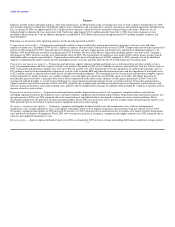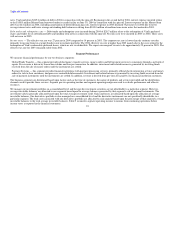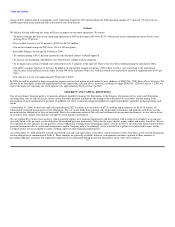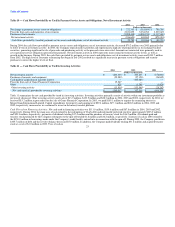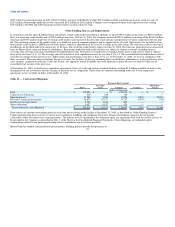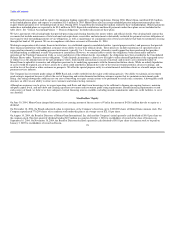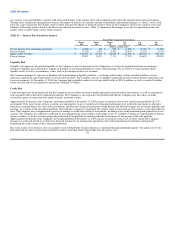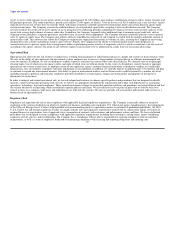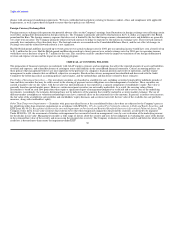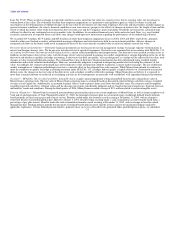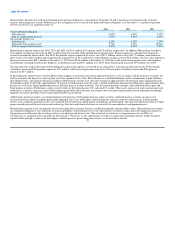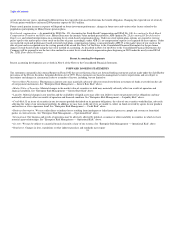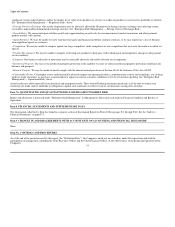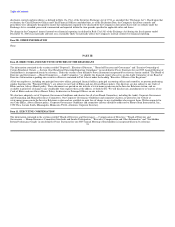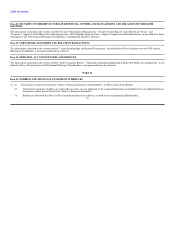MoneyGram 2004 Annual Report Download - page 29
Download and view the complete annual report
Please find page 29 of the 2004 MoneyGram annual report below. You can navigate through the pages in the report by either clicking on the pages listed below, or by using the keyword search tool below to find specific information within the annual report.
Table of Contents
ber 16, 2004. This dividend totaling $0.9 million was paid by MoneyGram to the transfer agent on December 31, 2004 and was distributed to the stockholders
of record on January 3, 2005. In addition, the Board of Directors declared a dividend of $0.01 per share of common stock on February 17, 2005 to be paid on
April 1, 2005 to stockholders of record on March 17, 2005. The terms of our credit facility place restrictions on the payment of dividends. For a description of
the restrictions, see Note 9 of the Notes to the Consolidated Financial Statements. Otherwise, any future determination to pay dividends on MoneyGram
common stock will be at the discretion of our Board of Directors and will depend on our financial condition, results of operations, cash requirements,
prospects and such other factors as our Board of Directors may deem relevant. The Company intends to continue paying a quarterly dividend of $0.01 per
share in 2005, subject to Board approval, which will be funded through cash generated from operating activities.
Viad sold treasury stock in 1992 to its employee equity trust to fund certain existing employee compensation and benefit plans. In connection with the spin-
off, Viad transferred 1,632,964 shares of MoneyGram common stock to the MoneyGram International, Inc. employee equity trust (the "Trust") to be used by
MoneyGram to fund employee compensation and benefit plans. At December 31, 2004, the Trust had 1,390,163 shares of MoneyGram common stock. The
market value of the shares held by this Trust of $29.4 million at December 31, 2004 represents unearned employee benefits that are recorded as a deduction
from common stock and other equity and is reduced as employee benefits are funded. For financial reporting purposes, the Trust is consolidated.
Off-Balance Sheet Arrangements
We have an agreement to sell, on a periodic basis, undivided percentage ownership interests in certain receivables, primarily from our money order agents, in
an amount not to exceed $450.0 million. These receivables are sold to commercial paper conduits (trusts) sponsored by a financial institution and represent a
small percentage of the total assets in these conduits. Our rights and obligations are limited to the receivables transferred, and are accounted for as sales
transactions under SFAS No. 140, Accounting for Transfers and Servicing of Financial Assets and Extinguishments of Liabilities. The assets and liabilities
associated with these conduits, including our sold receivables, are not recorded or included in our financial statements. The agreement expires in June 2006.
The business purpose of this arrangement is to accelerate cash flow for investment. The receivables are sold at a discount based upon short-term interest rates.
Executive management regularly reviews performance under the terms of the agreement. On average we sold receivables totaling $404.6 million during 2004
for a total discount of $9.9 million.
The Finance and Investment Committee of the Board of Directors generally must approve any transactions and strategies, including any potential off-balance
sheet arrangements, that materially affect investment results and cash flows.
ENTERPRISE RISK MANAGEMENT
Risk is an inherent part of our business. Interest rate risk, liquidity risk, credit risk, operational risk, regulatory risk and foreign currency exchange risk are the
principal risks in our business activities. The Company's risk management objective is to monitor and control risk exposures to produce steady earnings
growth and long-term economic value. The extent to which we properly and effectively manage each of the various types of risk is critical to our financial
condition and profitability.
Management implements Board approved policies covering the Company's funding, investments and use of derivatives. The Company's Board of Directors
has established a Finance and Investment Committee, consisting of four independent Board members, which oversees the investment, capital, credit and
foreign currency policies and strategies. An Asset/ Liability Committee, comprised of senior management, routinely reviews investment and risk management
strategies and results. The Board's Finance and Investment Committee receives periodic reports regarding the investment portfolio and results.
The following discussion of our risk management procedures for our principal risks and the estimated amounts of our exposure contains forward-looking
statements. The analyses used to assess such risks are not predictions of future events, and actual results may vary significantly due to events in the markets in
which we operate and certain other factors as described in the following discussion.
26



